Summary of Emily Carr
Emily Carr is a Canadian icon and national heroine, known for putting the wild Western Canadian landscape and its indigenous inhabitants on the global map through paintings and writings that intimately displayed the country's interior environments and its First Nation peoples. After gaining her artistic education in Europe, she spent her life distilling the modern techniques she had learned to portray her beloved homeland, becoming a seminal member of the Canadian Group of Painters. Her glimpses of early 20th century life in this remote part of the world would become an important documentation of existence and place; her deep love of, and immersion into, the native nature with its original occupants providing an intimate, alternative to the textbooks or annals of mainstream history.
Accomplishments
- A natural introvert who preferred being alone, Carr's creative practice was informed by her sojourns into nature where she spent great amounts of time sketching. Her proclivity for solitude drove her away from city life and society and into the wild, where she found a large sense of belonging with the indigenous cultures and their primal ways of being. This resulted in revelatory work portraying a sector of the population that, otherwise, may have never been witnessed or appreciated by the public eye.
- Carr had a passion for totem poles, and the iconic indigenous sculpture became one of the best-known symbols in her art. She spent a great deal of time searching for, discovering, and producing a comprehensive visual series of this ancient ode to tribal ancestry and history.
- Carr liberated the traditional Canadian landscape painting from its staid roots by infusing her work with modern techniques such as large, loose brushstrokes, nods to Post-Impressionism, mood-conveying color and drama, and a sense of sculptural dimensionality.
- As Carr's career progressed alongside the evolution of modern man's intrusion into the previously unadulterated lands of Western Canada, her paintings became poignant studies depicting the geographical, political, and social issues surrounding native communities and their displacement, as well as the use and abuse of natural resources.
The Life of Emily Carr
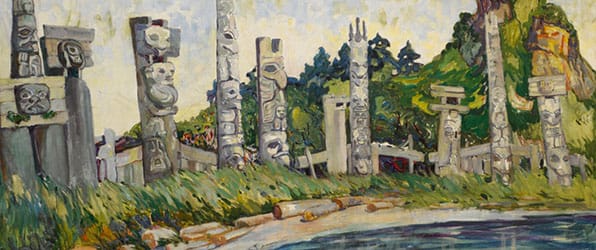
When Emily Carr pronounced that "the wild places and primitive people claimed me," she was referring to the First Nation tribes and interior lands of Western Canada. The homeland provided not only respite from polite society, in which she never felt completely herself, but also a place to escape, dream, sketch, and belong. Her depictions of primal Canadian nature and indigenous life would become priceless to the rest of the world; an inner glimpse not often afforded to outsiders.
Important Art by Emily Carr
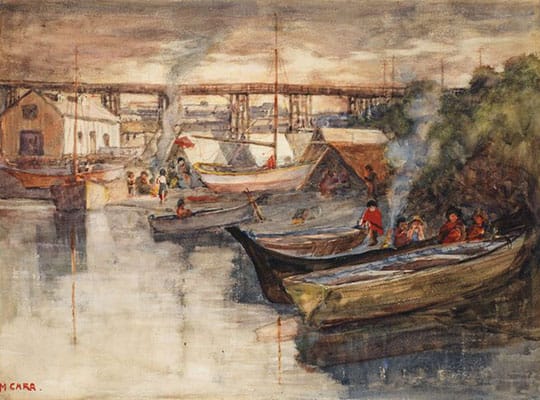
Indian Encampment
A small work, this watercolor by Emily Carr is quite detailed. According to author John Mackie it, "...offers a rare, perhaps even unique view of the old Kitsilano Indian Reserve on the south side of False Creek. It depicts a busy First Nations scene on the shoreline just west of the old Kitsilano rail trestle. Several dugout canoes are on the beach, there are a couple of campfires, and First Nations children are playing."
From early on in her career, Carr showed an interest in capturing themes of indigenous life in western Canada. Having visited many indigenous communities during several excursions beginning in 1908, according to author Doris Shadbolt, "the Indian theme came into Carr's art through her interest in the people. She was probably attracted to them first because they lived outside the class of society whose narrow values she had already rejected. She was proud that she could get along with Indians. ... The portrait sketches and figure studies of the people, the scenes of the village and its life, reflected the devitalized state of native culture - a theme rich in human significance...."
Watercolor - Private Collection
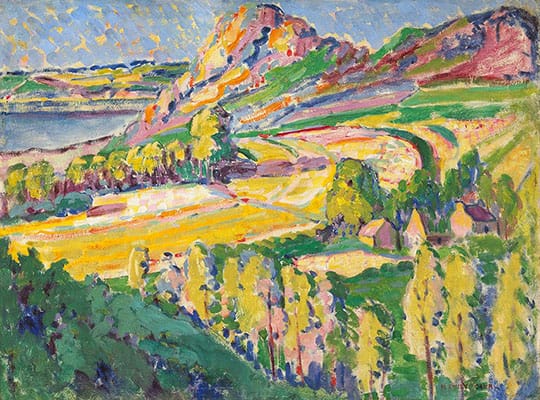
Autumn in France
This colorfully rendered work depicts a lush countryside in France. In the foreground are rows of trees behind which sit a group of houses near a plowed field. The background is dominated by mountains surrounding a body of water.
The time that Carr spent in France had a profound effect on shaping the future direction of her art. She was deeply impressed by the Post-Impressionism and Fauvism movements with their focus on bright colors and loose brushstrokes and she made several paintings in these styles while abroad. However, it was not Paris that most inspired her but rather the French countryside where she took several trips to capture its nature. This work reflects the influence of the modern style of painting on Carr at this time and according to curator and author Lisa Baldissera, "painted in Brittany, Autumn in France is a confident, dramatic depiction of the French landscape, reflecting a remarkable leap forward in Carr's accomplishment. No longer worrying over fine details, she uses bold brush strokes, which reflect the influence of Post-Impressionism, to suggest an overall movement. She creates a cohesive structure while at the same time capturing the rhythms and major transitions within the broad expanse of the French landscape. ... Carr's explorations in the countryside led her to understand how she should depict the unity, vibrancy, and structure of the landscape and be less concerned with naturalistic rendering." Of the beauty of France's countryside, Carr wrote, "they grow things beautifully, these Frenchmen - trees, vines, flowers - you felt the living things giving back, all the love and care the growers bestowed on them."
Importantly, the influence of French painting on Carr's own work would continue when she returned home. Her depictions of her country's landscapes would embrace these novel approaches to painting and in so doing would introduce modern art to Canada.
Oil on board - National Gallery of Canada, Ottawa, Canada
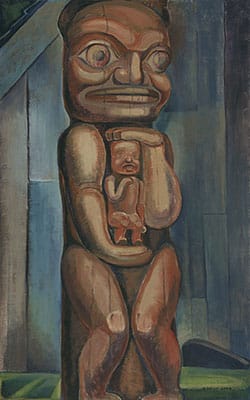
Totem Mother, Kitwancool
A large ornately carved totem pole dominates this painting. As the title reflects, the female figure, a mother, holds a small child between her two hands as if presenting it to the world.
Carr had long been fascinated with the Indigenous way of life and while she originally depicted numerous themes related to this subject, after several years she shifted her focus specifically to the representations of totem poles. While in the Indigenous village located on the shores of Kitwancool lake in Canada, Carr was especially drawn to totem poles that featured motherhood, perhaps because she had lost her mother at such a young age. Of these sculptures, Carr stated, "the sun enriched the old poles grandly. They were carved elaborately and with great sincerity. Several times the figure of a woman that held a child was represented. The babies had faces like wise little old men. The mothers expressed all womanhood - the big wooden hands holding the child were so full of tenderness they had to be distorted enormously to contain it all. Womanhood was strong in Kitwancool."
The year of this painting marked the beginning of a change in Carr's artmaking in which, according to author Doris Shadbolt, "she left behind the painterly approach she had used since her French sojourn and now translated what she saw in nature into simplified, solid, three-dimensional pictorial forms which she detached optically from the canvas surface and placed in deep space. ... This period of highly conceptualized works included a small group of stylized paintings in which a dynamic geometry is introduced into scenes, usually of totems in open village settings" such as is evident in this painting.
Oil on canvas - Vancouver Art Gallery, Vancouver, Canada
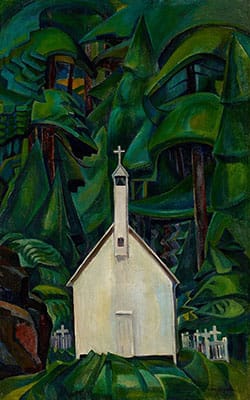
The Indian Church
Emily Carr was inspired to paint this work during a 1929 trip to the Mowachaht village of Yuquot. A celebration of stark contrasts, a simple, windowless white church stands out against the dense forest that has been rendered in dark green blocks of color.
According to curator and author Lisa Baldissera, "a painting of a church represents a philosophical departure for Carr: during her earlier trips, she had taken no interest in the mission churches that had been built in the Native villages in the region, choosing instead to focus on indigenous forms of spiritual expression." The choice of a church was an interesting subject for Carr as it can be seen as a statement about religion itself. Carr struggled to define her own religious beliefs after growing up in a rigidly devout family. For her, it was nature where she felt closest to God. According to author Ian Thom, "...Carr felt a deep spiritual connection to the landscape of the province, and it was in the forests that she felt the living presence of God." Carr presented this connection visually by placing the church central in nature as if religion is somehow disrupting the purity of the natural landscape itself. As author Doris Shadbolt explains, this painting, "...employs a symmetrical, shallow-spaced composition with forest matrix and church façade facing the viewer in timeless confrontation, but here the contrast of alien white seems to suggest the intrusion of man into nature's domain."
This painting has become controversial in recent years due to reexaminations of the treatment of indigenous peoples in the Americas. According to author Sheena Goodyear, in 2018, "the Art Gallery of Ontario has scrubbed the word 'Indian' from the title (changing it to Church at Yugquot Village...), because 'that is a word that causes pain,'" Curator Georgiana Uhlyarik says." It is a decision that has not been universally popular with some arguing that regardless of cultural sensibilities, an artist's work should never be altered."
Oil on canvas - Art Gallery of Ontario, Toronto, Canada
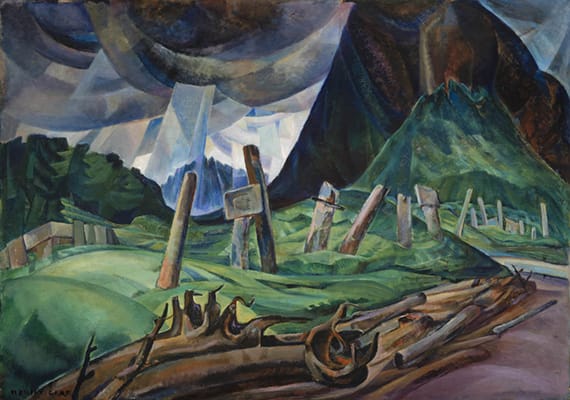
Vanquished
A ravaged indigenous landscape dominates this painting. As described by curator and author Lisa Baldissera, in this work "Carr uses a new, heavily modelled sculptural language to carve out a scene of desolation and ruin [she witnessed on one of her many trips]. As Carr explains in her autobiographical work Klee Wyck, in an abandoned village site 'a row of crazily tipped totem poles straggled along the low bank skirting Skedans Bay....In their bleached and hollow upper ends stood coffin-boxes boarded endwise into the pole by heavy cedar planks boldly carved with the crest of the little huddle of bones inside the box, bones that had once been a chief of Eagle, Bear or Whale Clan.'"
This work is twofold in significance. First, the painting shows Carr's progression to a more modern aesthetic of artmaking in a slightly Cubist style. According to author Doris Shadbolt, "The painting also shows how she employed the cubist idea in the developing expressiveness of her own art, using it not as a form-fragmenting process but as a structuring one, with expressive rather than analytical intent."
Secondly, it provides an instance in which Carr is attempting to make a statement with her art. According to Baldissera, "in the 1930s displaced or commissioned totem poles were featured at world's fairs and exhibitions as part of an emerging national vision for Canada; at the same time, a growing tourist economy sought to exploit traditional Aboriginal arts. By contrast Carr was determined to attest to the impact of colonialism on village life. The changes that the villages in the Queen Charlotte Islands (Haida Gwaii) had undergone since her first visits in the early 1900s, including the banning of potlatch ceremonies and the effects of clear-cutting, must have been evident to her. These paintings of the late 1920s and 1930s are invested with a quality of mourning that is both romantic and palpable."
Oil on canvas - Vancouver Art Gallery, Vancouver, Canada
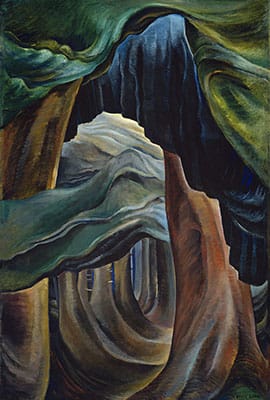
Forest, British Columbia
One of several paintings made of the Canadian forests, Carr provides a detailed glimpse into the deep interior of the woods. A row of trees on either side provides a pathway for the eye to follow towards the center of the canvas while overhead, large swaths of green and blue abstractly represent the leaves and sky.
The powerful energy of the forest which was sacred to Carr is evident in this painting and according to author Doris Shadbolt, "Carr sometimes conceives of the forest as an impenetrable space-consuming wall, shutting out light and sky, or as shadowed interior, and at times she ascribes to the forest the sense of terrible presence. ... Composition and space [in this painting] are stage-like; passages between the ancient grey-brown tree trunks lead off to wings left and right; great curtains of heavy foliage hang and float in weighted turgid rhythms through which a shaft of grey light enters the dark interior. ... light is assigned its primal symbolic role of dispelling dark and creating life, and the resulting dramatic sense of waiting, watching, and foreboding is intense."
In this mature work, we find the influence of Carr's art studies abroad as the forest is rendered in a more modern, muscular, abstract way with many of the details from the artist's earlier nature paintings absent. The newer style was also informed by her interactions with the Group of Seven artists she had begun to associate with and, American artists such as Arthur Dove and Georgia O'Keefe, whose work she encountered on exhibit during a trip to New York City in 1930.
Oil on canvas - Vancouver Art Gallery, Vancouver, Canada
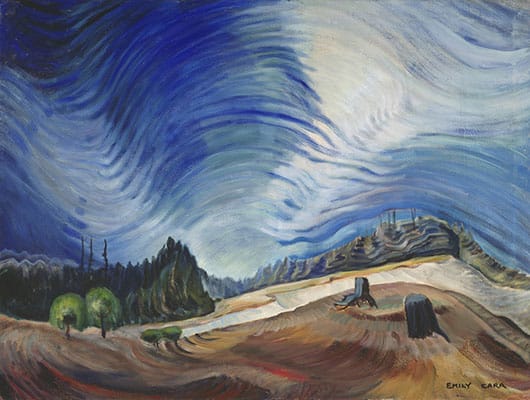
Above the Gravel Pit
Carr created several paintings of Vancouver whose natural beauty provided a font of inspiration. Of this work, Carr stated, "I started a new canvas today, a skyscape with roots and gravel pits. I am striving for a wide, open sky with lots of movement, which is taken down into dried greens in the foreground and connected by roots and stumps to sky. My desire is to have it free and jubilant, not crucified into one spot, static. The colour of the brilliantly lighted sky will contrast with the black, white and tawny earth."
Carr's modern approach is exemplified in this work through her use of loose, sweeping brushstrokes of saturated color to render the landscape. But it also provides evidence of the focus she demonstrated in her late career on visually representing the energy and fluidity of nature beyond its face value. According to author Doris Shadbolt, in this painting's, "...grand sweep of space, she is working from a concept of energy that belongs to the elements in nature themselves: the power of wind, the intensity of sun, the thrust of growth, and so on. In this new group [of paintings], the forms of nature are still, so to speak it is the atmosphere that vibrates. Here she conceives an energy that courses through the air like a low-voltage electric charge, leaving the clumps of trees and the sky - everything - in a state of trembling motion. An early hint of this particular form of energy is seen in the molten, greyed, distant clump of trees profiled on the right-hand slope in Above the Gravel Pit."
Oil on canvas - Vancouver Art Gallery, Vancouver, Canada

Odds and Ends
Rendered in a Post-Impressionist style, this work features rolling green hills under a bright blue sky. In the foreground sit several tall trees interspersed amongst stumps, evidence of the intrusion of man.
Nature inspired Carr's work from her earliest paintings and she desired to highlight the beauty of the Canadian landscape for the rest of the world. However, late in her career these depictions of nature furthered an additional goal of making an environmental statement about man's destruction of her beloved wilderness. According to author Adrianna Richetti, "in the last decade of life, Carr started noticing disturbing changes in the landscapes she loved to paint; industries were replacing forests. ... [This painting] exemplifies her worries about the logging industry".
Carr succeeds in expressing how nature can be transformed into something unnatural. The message we get isn't one of progress and modernity. It is one of abuse and exploitation. Richetti states: "This destruction weighed heavily on Carr who used her art to visualize her feelings. In one of her writings, about the sadness of the loss of her beloved trees she wrote, "it's a horrible sight to see a tree felled, even now, though the stumps are grey and rotting. ... They are their own tombstones and their own mourners."
Oil on canvas - Art Gallery of Greater Victoria, Victoria, Canada
Biography of Emily Carr
Childhood and Education
Emily Carr was born into a large family. Mother Emily and father Richard ran a wholesale grocery and liquor business in Victoria, Canada. She was the eighth of nine children, and three of her brothers died as infants leaving her with four older sisters and a younger brother. While a rebel, even at a young age, her parents recognized her artistic talents and allowed her to take drawing lessons as a child and again later in high school. Of her childhood need to draw where and whenever she could, author Doris Shadbolt explains, Carr, "...liked to draw heads, and her habit of drawing faces on her fingernails, pinafores and textbooks contributed to her reputation as a refractory pupil. She also purchased some plaster casts of human features - noses, hands, lips, and eyes - which she drew over and over again." Years later, Carr wrote of her early longing to be an artist and described how her, "father pruned the cherry tree under our bedroom window. The cherry sticks were twisty but I took three of the straightest, tied them at one end and straddled them at the other and put two big nails in the wood to hold a drawing board. With this easel under the dormer window of our bedroom I felt completely an artist."
Sadly, Carr's childhood did not stay happy for long as her mother died in 1886 when the budding artist was only fourteen. Being left with her strict disciplinarian of a father made her life difficult and, when he died two years later, her strictly religious eldest sister's assumption as head of the family proved no less restrictive.
Early Training
Suffering under the controlling nature of her devoutly-religious sister Edith, Carr longed to escape and was able to successfully petition her guardian, James Hill Lawson, to allow her to move to California for art school. Carr began studies at the California School of Design in San Francisco in the late summer of 1890. She struggled at first, because while she enjoyed drawing from still lifes, according to Shadbolt, "such was the prudishness of her upbringing in Victoria ... that she could not bring herself to take the next step and enter the life class with its nude models...." Her favorite activity at school was sketching outdoors; a practice that would stay with her for the rest of her life and of which Carr stated, "was a fluid process, half looking, half dreaming, awaiting invitation from the spirit of the subject to come, meet me half way...Atmosphere, space cannot be touched, bullied like the vegetables of still life or like the plaster casts."
Mature Period
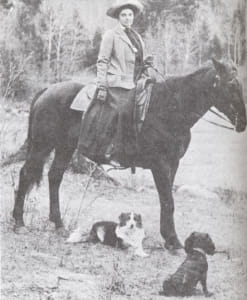
Having spent three years at school, Carr returned home from San Francisco and threw herself into artmaking. In addition to long sojourns in the woods to sketch, she supported herself by teaching children's art classes in Victoria. However, this did not satisfy Carr and so, longing for more training to hone her skills as much as for a new adventure, she set off to Europe, choosing London so she wouldn't have to struggle with learning a new language.
She enrolled in the Westminster School of Art in the fall of 1899, but quickly realized that cities were not for her. Finding London unbearably gloomy, dirty, and confining she later wrote of it in her biography stating, "so I looked at London from different sides, mostly hating it; cities did not sit on me comfortably. There were a few little tag ends I loved, insignificant things that most Londoners scorned, but the oldness and history of it made little appeal to me." Being away from home did however help Carr discover important truths about herself that would inform the rest of her life. She discovered a strong sense of national pride in her longing for life back home in Canada. In response to her London acquaintances' attempts to influence her level of sophistication upward, she firmly stated: "I am Canadian, I am not English. I do not want Canada polished out of me." Carr also realized that despite having two suitors interested in pursuing a romantic relationship with her, she would not marry or have children and would instead devote herself solely to her art.
While Carr soon fell into a formal routine of classes at Westminster, it was the courses she took on breaks from school where she benefitted the most professionally. According to Shadbolt, "more rewarding for her art ... were the times she spent outside London. There was a summer vacation in Berkshire, where she joined a class and had her first English outdoor sketching experience. ... Then there was a term in the art colony at St. Ives, Cornwall, where she joined the group working primarily in sea and landscape painting..." During this time, Carr studied with teachers Jules Olsson and Algernon Talmadge, and in the Spring of 1902, she spent time learning with John Whitley at the Meadows Studios in Hertfordshire which again provided her the opportunity to engage with and paint from the nature of the English countryside.
Of the five years Carr spent in England, the last year and a half were not productive as her health decreased and she became so sick that she was forced to spend eighteen months in a sanitorium. In 1904, upon recovery, she returned home but there were no opportunities for her in Victoria. So, in the beginning of 1906, she moved to Vancouver where she began painting in earnest and supported herself by teaching art lessons to the locals.
It was during this time that she began exploring two main themes which she would return to throughout her career, both deeply rooted in the love of her native home. The first of which was nature, as she began to eagerly capture the wilds of Canada. The second of which was scenes of daily life which she had witnessed during her many trips to the indigenous First Nation settlements in the northern part of her country. At first these paintings were of the people and their village life however, according to Shadbolt, "...after 1912 figures disappeared from her painting as her artistic goals became clarified. Once she began to focus on the Indians' monumental sculptural art [especially their totem poles] of earlier, more vital times, her art developed a new purpose." Of the impact of one trip to a settlement, Carr stated, "the Indian people and their Art [sic.] touched me deeply.... By the time I reached home my mind was made up. I was going to picture totem poles in their own village settings, as complete a collection of them as I could.... With this objective I again went up north next summer and each successive summer during the time I taught in Vancouver." Carr was so respected in these communities that she was even given the honor of an Indian name; Klee Wyck or laughing one.

While excelling in painting and teaching, Carr longed to expand her art knowledge and broaden her skills by delving into the world of modern art that was spreading across Europe. In July 1910, she once more left her country, this time for Paris and of this trip, she stated, "I did not care a hoot about Paris history. I wanted now to find out what this 'New Art' was about. I heard it ridiculed, praised, liked, hated. Something in it stirred me, but I could not at first make head or tail of what it was all about. I saw at once that it made recent conservative painting look flavourless, little, unconvincing." Carr was immediately drawn to the Fauvism and Post-Impressionism movements and its artists and the elements of these movements began to feature in the way she rendered nature in her paintings; first while still working in France and later when she returned home.
Once more however, as in London, the intensity of Paris life weighed on Carr and she fell ill again. After a brief stay in Sweden to recover her strength, she was able to travel away from the city and spend time in various French towns, including Crécy-en-Brie and Brittany, where she sketched and deepened her love of painting in nature as well as began to work more in the mediums of watercolor and oil paints. A major achievement during her time abroad occurred when she was included in the impressive Salon d'Automne art exhibition of 1911 in which two of her paintings were put on display. It was an impressive achievement for a young artist who had no real public recognition in her home country.
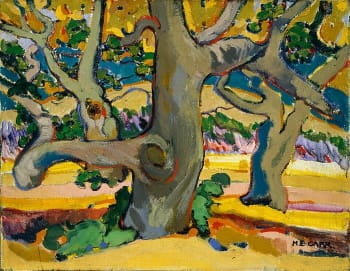
Emboldened by her trip to Europe, Carr returned to Canada in late 1911 and within months had returned to Vancouver where she opened a studio, painted, and exhibited her works while once more teaching art lessons to the locals. What she had seen in Paris influenced her work which took on a much more modern and Impressionistic style. Of her time abroad, Carr stated, "...I was glad I had been to France. More than ever I was convinced that the old way of seeing was inadequate to express this big country of ours, her depth, her height, her unbounded wideness, silences too strong to be broken..." She insisted that, "I could not paint in the old way - it is dead - meaningless - empty."
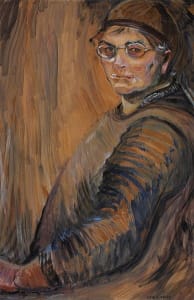
The outbreak of World War I played a large role in ending any progress she had been making in her art. There were no longer many pupils interested in or able to afford lessons and so her ability to support herself ceased and in the spring of 1913, Carr was forced to return home to Victoria. Alongside her inability to make a living painting due to the war, was the fact that she began to feel disillusioned with the art world and felt no one could understand her work or the new modern way of painting she was trying to capture. According to author Ian Thom, "between 1913 and 1927, Carr did little painting because she felt there was no support for her art." For fifteen years, Carr's painting output was virtually non-existent but she maintained some creative outlet by making Indian-themed pottery which she sold for money during the lean and trying war years. Having always tried to depict the realities and beauty of Indigenous life, Carr struggled with the designs she made on her pottery and the necessity of making it attractive to potential buyers. Of this she wrote, "I ornamented my pottery with Indian designs - that was why the tourists bought it. I hated myself for prostituting Indian Art; our Indians did not 'pot,' their designs were not intended to ornament clay - but I did keep the Indian designs pure. ... I loved handling the smooth cool clay. I loved the beautiful Indian designs, but I was not happy about using Indian design on material for which it was not intended...."
Later Period
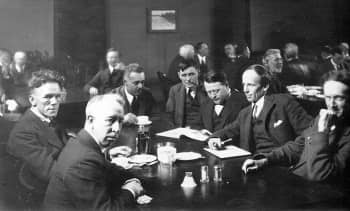
Carr may never have returned enthusiastically to painting save for an event in 1927 which served to seriously jumpstart the relaunch of her artistic career, a visit to her studio from the National Gallery of Ottawa's director, Eric Brown. According to Shadbolt, "this visit began the revitalization of her life and art in two ways. Brown invited her to participate in a forthcoming exhibition of West Coast Indian art at the National Gallery in Ottawa [which began to give her art national attention], and he told her of Frederick B. Housser's important book A Canadian Art Movement [from which she learned for the first time about the important Canadian modern art movement....] the Group of Seven." Fascinated by what her fellow Canadian artists were doing, Carr set out on a trip East to Toronto where she met, and began a friendship with several of the Group of Seven artists. Of their impact, Carr said, "they had torn me; they had waked something in me that I had thought quite killed, the passionate desire to express some attribute of Canada."

The most important of these new Group of Seven acquaintances was Lawren Harris who became a mentor to Carr and helped guide her art into a more modern direction. The other profound influence on her was the American artist Mark Tobey who visited her studio in 1925. Both men encouraged Carr to push herself in her artmaking and from this point forward Carr's work became more expressive with looser, more abstracted images of nature. This change even occurred in her paintings of Indigenous themes such as her totem poles which transitioned into a less detailed, more Cubist style. Used to being a loner working in near isolation in western Canada, Carr welcomed these new friends and began craving more fellowship. She even went so far as to become a founding member of the Canadian Group of Painters in 1933 which consisted of twenty-eight artists, among which were the Group of Seven, all of whom focused their efforts on creating a Canadian artistic aesthetic and helped to define and direct a notion of what was Canadian art.
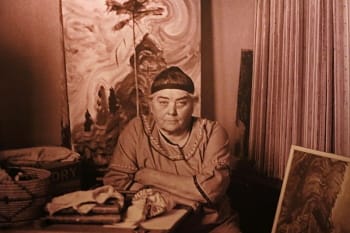
Late in her career Carr began experimenting with new artmaking techniques. As Shadbolt explains, Carr's paintings began to exhibit, "...a freedom and a quality of self-liberation. It took on expansiveness and flow; movement and rhythm replaced mass and weight; crowded interiors gave way to air and space. Compared to the heavily designed paintings of 1928-31, her later work appears to be less the product of the controlling mind and more that of the liberated spirit." These shifts in her work included an increased focus on watercolors and the rendering of large charcoal drawings on manila paper which later progressed to her use of oil paint on this paper which she fashioned to plywood for support. Her paintings, which still took nature as their theme, now often showed a focus on motion and began to feature mountains and trees as well as skies full of abstractly rendered swirls of movement.

Drawing inspiration from nature also remained an important element to Carr's artistic process and involved the need to spend long periods of time sketching outdoors. To further this passion, in 1933 she bought a van she affectionately named "Elephant" which she would load up with supplies, as well as her pet dogs and monkey, and take into the woods where she would set up camp, often for days at a time.
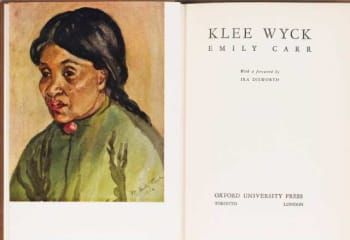
The year 1937 proved difficult for Carr as she had a series of heart attacks, the last of which was so bad she was forced to sell her van as she could no longer be on her own in the wilderness. As her strength deteriorated, she found it difficult to paint large scale works and focused more of her attention on another passion, writing. While she did still paint, mostly smaller works, including some portraits, her most impressive output at this time was a series of books. In all, she would have seven books published, the most important of which were her stories of Indian life in Canada which bore the title of her Indian nickname Klee Wyck (1941). It was so popular it was read as part of a program on Canadian radio. In 1946, she completed her autobiography, Emily Carr: Growing Pains.
Despite her ill health Carr did manage to paint a few final nature paintings including during her last excursion to Mount Douglas Park in the summer of 1942. Her late efforts culminated in her first major exhibition which took place in a gallery in Montreal in 1944, the same year she suffered another serious heart attack. Forced into a nursing home, she died less than a year later as a result of a final heart attack at the age of seventy-three.
The Legacy of Emily Carr
Emily Carr's greatest legacy is the attention she brought through her art, to both the native way of life as well as the rich abundance of nature that dominated western Canada in the first half of the 20th century. Of the impact of her work, author Doris Shadbolt stated, "Carr is in the strongest sense regional. In one sense those forests, the carvings in their settings, giant trees, sea and beaches did not exist until she painted them. She gave form to a Pacific mythos, a form so carefully distilled in her imagination that even though we never visit the West Coast, we know it."
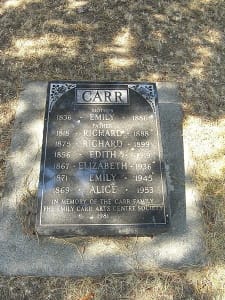
The way that Carr rendered these subjects, with her loose brushstrokes and simplified forms, along with her association with the Canadian Group of Painters, helped to bring modern art to Canada and influenced subsequent generations of Canadian artists such as contemporary artist Jeff Wall. According to curator and author Lisa Baldissera, "Emily Carr's uniquely modern vision of the British Columbia landscape became associated with the articulation of Canada's national identity in the early twentieth century. ... Her work influenced how the West Coast has been imagined and expressed by subsequent generations of artists."
Influences and Connections

- Marius Barbeau
- Eric Brown
- Ira Dilworth
- Fred Housser
- Eric Newton
-
![Cubism]() Cubism
Cubism -
![Fauvism]() Fauvism
Fauvism -
![Group of Seven]() Group of Seven
Group of Seven -
![Modernism and Modern Art]() Modernism and Modern Art
Modernism and Modern Art - Canadian Group of Painters
-
![Lawren Harris]() Lawren Harris
Lawren Harris -
![Mark Tobey]() Mark Tobey
Mark Tobey - A.J. Casson
- A.Y. Jackson
- Arthur Lismer
- Marius Barbeau
- Eric Brown
- Ira Dilworth
- Fred Housser
- Eric Newton
-
![Cubism]() Cubism
Cubism -
![Modernism and Modern Art]() Modernism and Modern Art
Modernism and Modern Art -
![Post-Impressionism]() Post-Impressionism
Post-Impressionism - Canadian Group of Painters
Useful Resources on Emily Carr
- Growing Pains: The Autobiography of Emily CarrOur PickBy Emily Carr
- Hundreds and Thousands: The Journals of an ArtistBy Emily Carr
- Klee WyckOur PickBy Emily Carr
 Ask The Art Story AI
Ask The Art Story AI














